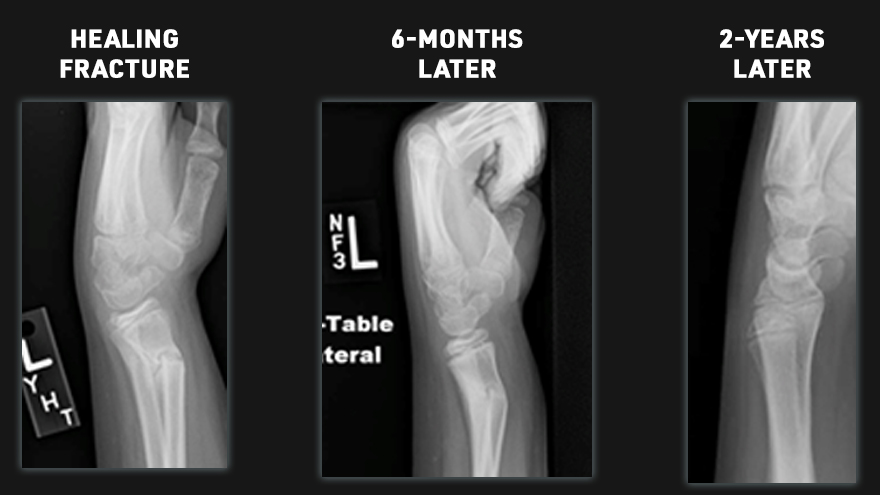Children’s Fractures: Your Questions Answered
I think my child has a broken bone, where should I go?
Many people take their children to urgent care clinics or the emergency room. As long as they have an x-ray machine they should be able to diagnose a fracture. In these setting they will typically splint your child’s fracture and refer you to a specialist. Pediatric orthopedic surgeons are specially trained to treat children’s fractures and the various unique problems that can occur with children.My child fractured their growth plate, what’s this mean?
This is the area of the bone where growth comes from. These are located all over the body but typically at the end of the bones. Fractures to these areas can result in the bone growing abnormal. Because of potential for shortening of the arm or leg, or the bone growing crooked it is important for fractures in these areas to be followed closely and for up to 1-2 years or longer. It is better to identify a problem early. Small problems can be treated with small surgeries.
The bones on the x-ray are off; should I be worried?
Because children are growing, unlike adults, their bones will remodel and straighten with growth. The amount of remodeling that will occur depends on the child's age, the bone fractured, and the fracture's location. In many cases, an angled bone will grow straight over the course of a year. For this reason, children's fractures should be followed by someone with experience in caring for children.

How long does it take a fracture to heal?
Multiple variables go into the decision to determine when a fracture is healed enough to be out of a cast. These include the child's age, the bone that is fractured, and the location of the fracture. For example, young children heal faster than adolescents; adolescents heal faster than young adults, who heal faster than older adults. In young children, most fractures heal in 4-6 weeks. Adolescents take six weeks to heal most fractures, and adults can take much longer.
Although your child's fracture is healed enough to be out of a cast, it may not be healed enough to return to all activities. In many cases, children are placed in splints when their casts are removed, which typically gives them added protection for several weeks; in case they forget their limitations.
Related Topics
OrthoInfo provides trusted resources developed and reviewed by the experts at the American Academy of Orthopaedic Surgeons.
- Ankle Fractures
- Ankle Fractures in Children
- Clavicle Fractures
- Nursemaid Elbow
- Elbow Fractures
- Femur Fractures
- Forearm Fractures
- Growth Plate Fractures
- Pelvic Avulsion Fractures
- Proximal Humerus Fractures
- Thigh bone (femur) Fracture
- Tibial Shaft Fractures
Fracture Programs at Renown Children's Hospital
- Pediatric Fracture Clinic (same day appointments)
- In Office Fluoroscopy and X-rays
- Casting and Bracing
- Percutaneous Fracture Fixation
- Intramedullary Rods
- External Fixation
- Specialized Pediatric Plating